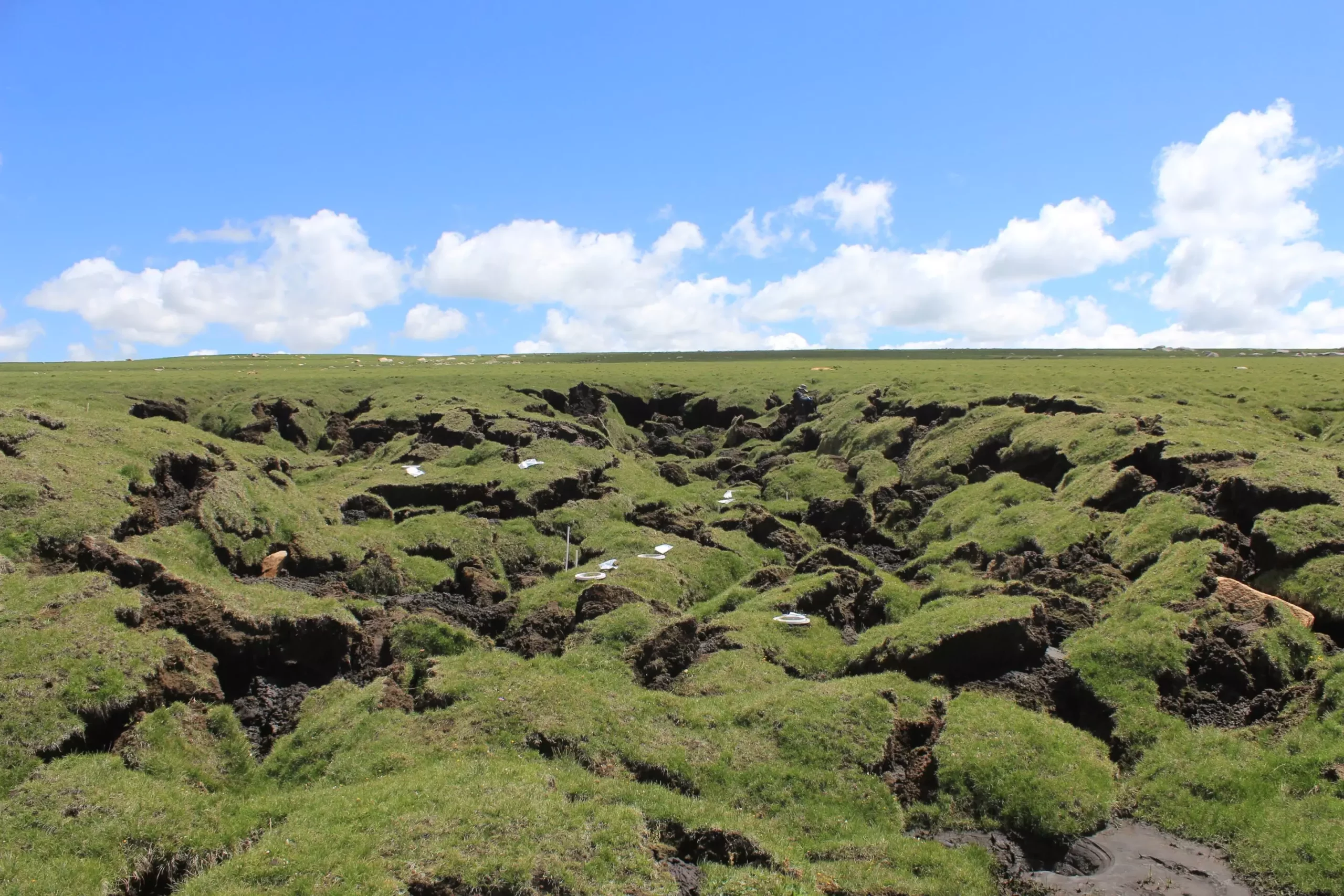A recent study published in Nature Geoscience has shed light on the sensitivity of soil carbon dioxide (CO2) emissions to climate warming in permafrost-collapsed areas. The research highlights the significant impact of warmer temperatures on permafrost thawing in high-latitude and high-altitude permafrost regions, leading to the restructuring of land surface morphology and changes in soil properties.
The study, led by Prof. Yang Yuanhe from the Institute of Botany of the Chinese Academy of Sciences, conducted field warming experiments in both thermokarst and non-thermokarst areas to compare the effects of climate warming on soil CO2 flux. The researchers found that the warming-induced increase in soil CO2 release was about 5.5 times higher in thermokarst features than in non-thermokarst landforms. This suggests that thermokarst formation influences the responses of soil CO2 fluxes to climate warming.
The study analyzed over 30 potential drivers of the warming effects on CO2 release, including soil physicochemical analyses, solid-state 13C nuclear magnetic resonance, and metagenomic sequencing. The researchers identified that the lower soil substrate quality and higher abundance of microbial functional genes related to organic carbon decomposition in thermokarst-affected soils contributed to the greater warming response in these areas.
Implications of the Study
The findings of this research have significant implications for understanding the impact of permafrost collapse on soil carbon dioxide emissions. The study estimates that there could be an additional 0.4 Pg C year-1 of soil carbon release in upland thermokarst regions in the Northern Hemisphere, which is about a quarter of the projected permafrost soil carbon losses by the end of the 21st century. This highlights the importance of considering thermokarst formation in future climate projections.
The study provides valuable insights into the relationship between permafrost collapse and soil carbon dioxide emissions. The research suggests that thermokarst formation significantly increases the temperature sensitivity of CO2 release, leading to stronger soil CO2 response to warming in thermokarst landscapes. Understanding these dynamics is crucial for accurately projecting the future trajectory of permafrost carbon-climate feedback.


Leave a Reply